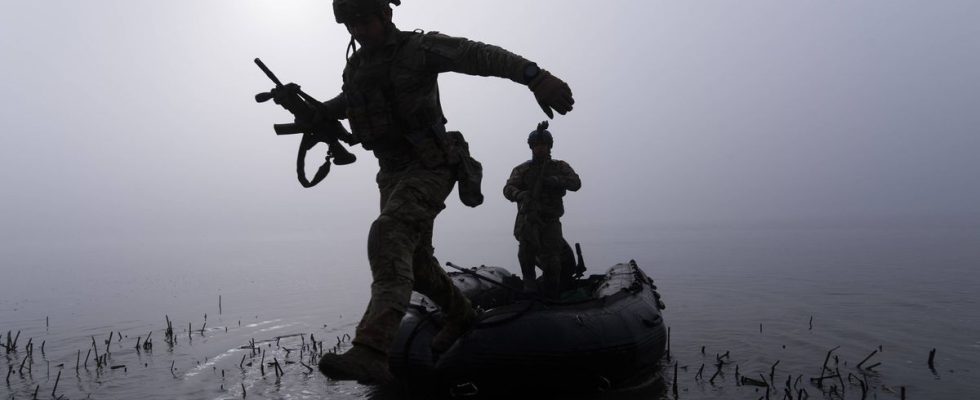After months of a sluggish Ukrainian counter-offensive, kyiv congratulated itself on having made advances on the left bank of the Dnieper, in southern Ukraine. But what is it about? Why is it important? 20 minutes takes stock for you of the situation of this river and its surroundings.
What is happening around the Dnieper River?
Ukraine announced an advance of its troops on the left bank of the Dnieper occupied by the Russian army, a success after months of unsuccessful counter-offensive. Kiev claimed on Sunday to have pushed back the Russian army “from 3 to 8 km” deep on the left side of the Dnieper River, which had become a front line in southern Ukraine, without specifying whether its troops fully controlled this area of the Kherson region (south).
The leader of the occupied part of the Kherson region, Vladimir Saldo, admitted that “about one and a half companies” of Ukrainian soldiers, or several dozen or hundreds of men, had managed to anchor positions on the outskirts of the village of Krynky, while downplaying its importance. Moscow replaced the commander of the Russian “Dnieper” military group operating in the area at the end of October, due to the difficulty of the situation according to analysts.
What does Russia say?
Russian Defense Minister Sergei Shoigu assured Tuesday that his army was repelling “all Ukrainian landing operations” on the occupied bank of the Dnieper River. “All attempts by the Ukrainian armed forces to carry out a landing operation in the Kherson direction have failed,” the minister said, referring to the name of the southern region of Ukraine where the Dnieper constitutes the front line.
However, Sergei Shoigu’s statements are contradicted by specialized Russian bloggers, as well as by military experts. According to them, the Ukrainian army has succeeded in anchoring several positions since the end of October on this bank of the Dnieper.
Why is it important?
If this advance is confirmed, it would be the biggest push by the Ukrainian army against the Russians since the recapture of the village of Robotyné in the Zaporizhia region in August, while the counter-offensive was launched in June.
“Ukraine has a fairly extensive bridgehead on the left bank. The Russians are suffering losses there because the right bank, controlled by the Ukrainian armed forces, is located on a hill and it is much easier for them to fire on Russian troops from there,” according to the Russian commentator and journalist based in Vilnius Michael Nacke, sentenced in Russia in absentia to eleven years in prison for comments about the Russian army.
According to French military expert Michel Goya, the Ukrainian operation is “quite limited, quite symbolic”, but it “allows small victories to be declared after the failure of the main offensive”. Taking positions in depth could allow Kiev to launch a larger assault towards the Crimean peninsula, annexed by Russia in 2014. But to achieve this, experts estimate that it would require thousands of men and heavy vehicles .
Why is the absence of a bridge a crucial point?
To successfully launch an assault towards Crimea, “bridges over the Dnieper are necessary, but any pontoon would be vulnerable to Russia’s air and land firepower, which has not been completely suppressed”, and in particular to drones, believes Mykola Bielieskov, Ukrainian military analyst.
Only bridges, existing or to be built, make it possible to transport heavy equipment and logistics. If we want to advance several tens of kilometers in depth, we must also advance our artillery, otherwise we find ourselves cut off from all support,” explains Michel Goya. “The Ukrainians who crossed are infantrymen and naval commandos [en zodiacs]. They have a few vehicles but overall remain very light. They are above all protected by their artillery remaining on the other side of the river,” notes the retired French colonel.

